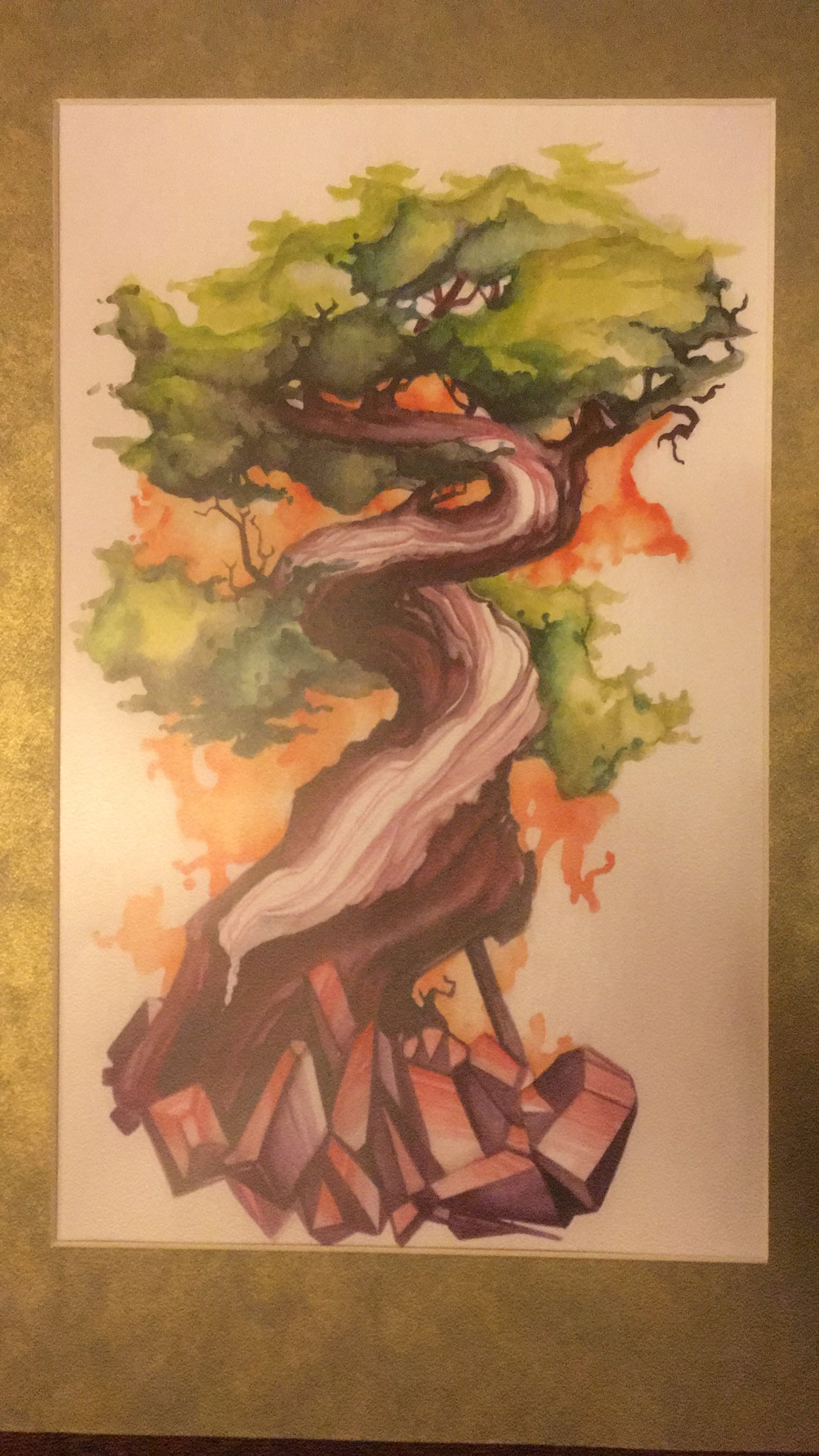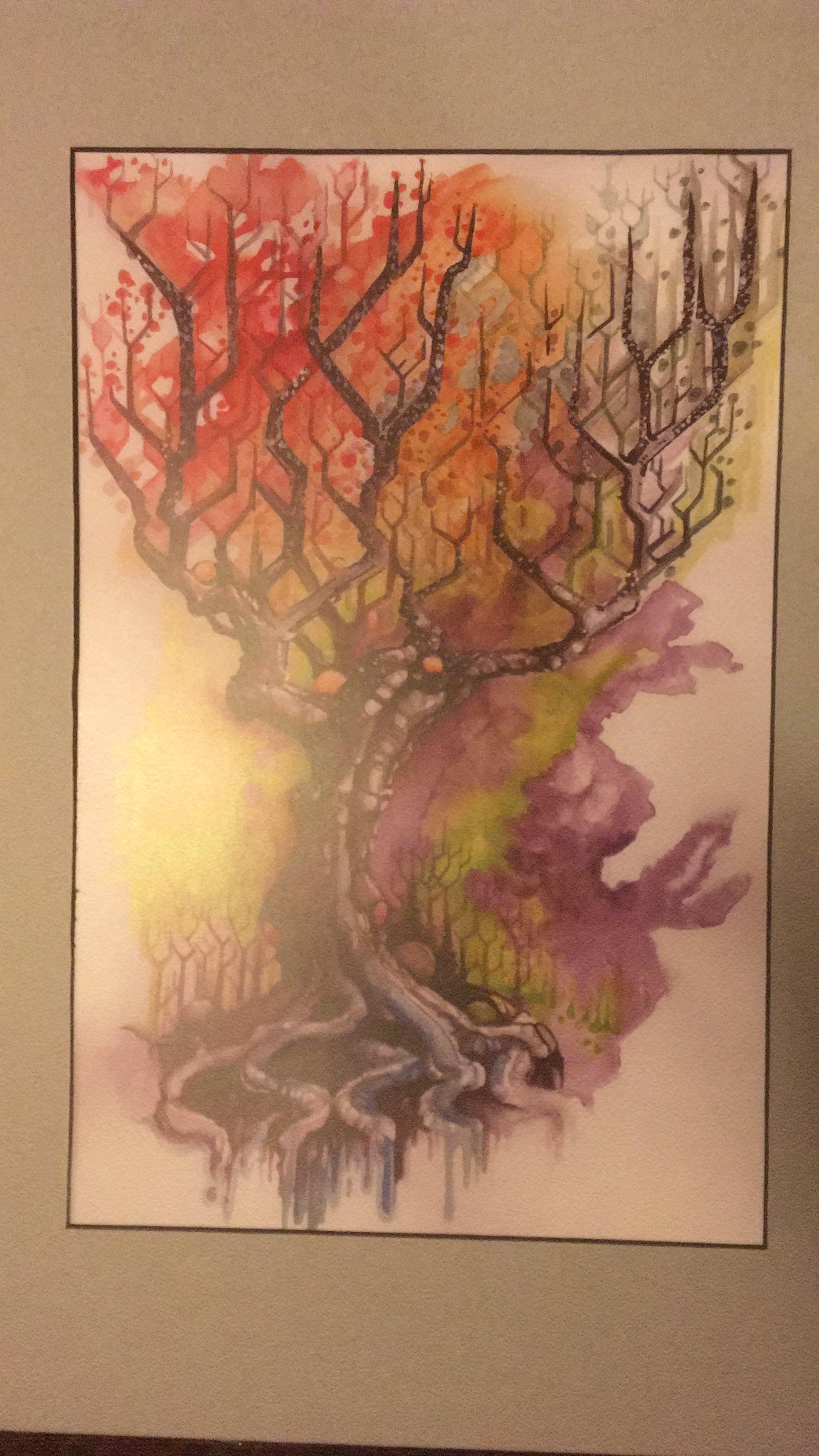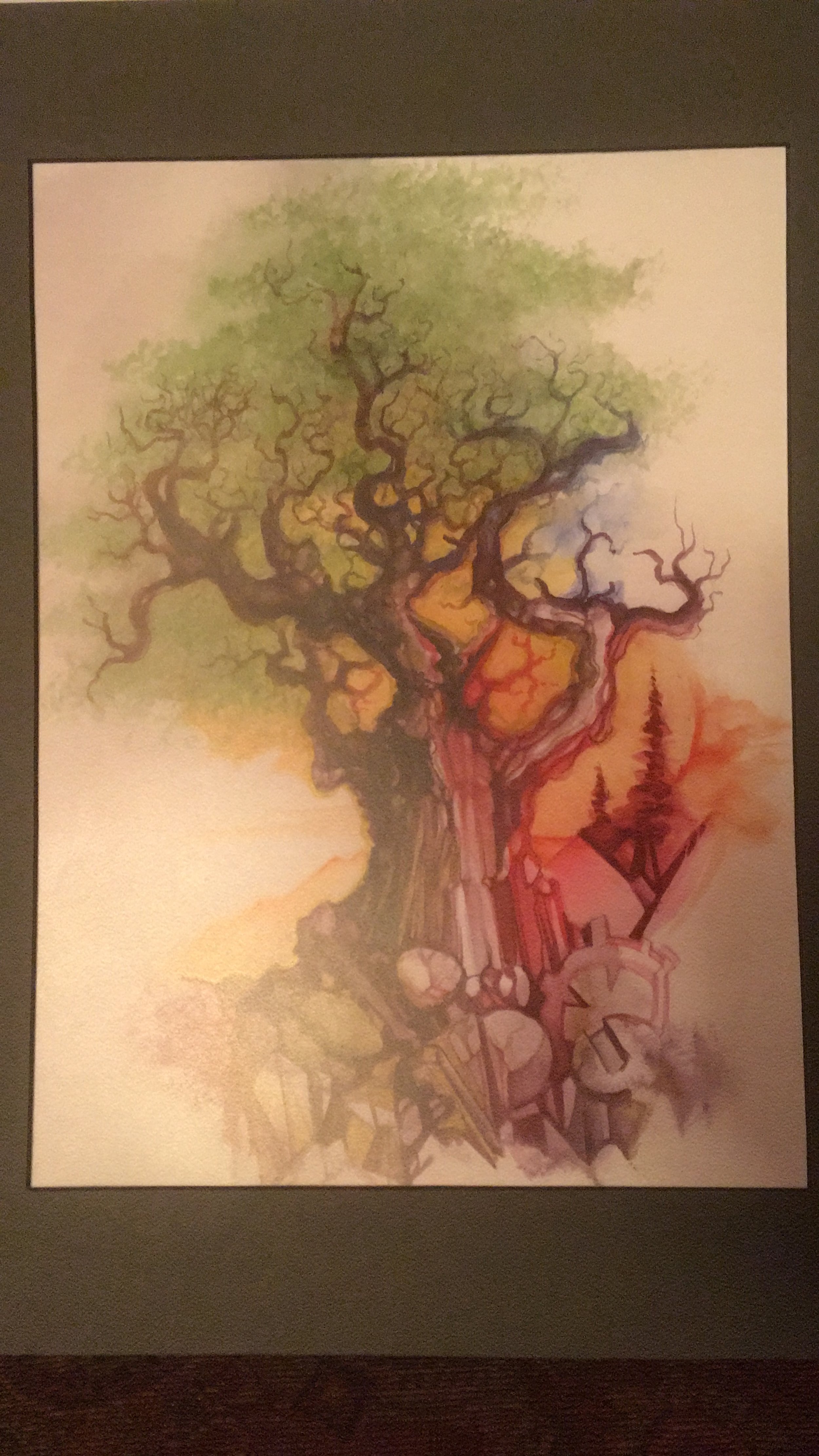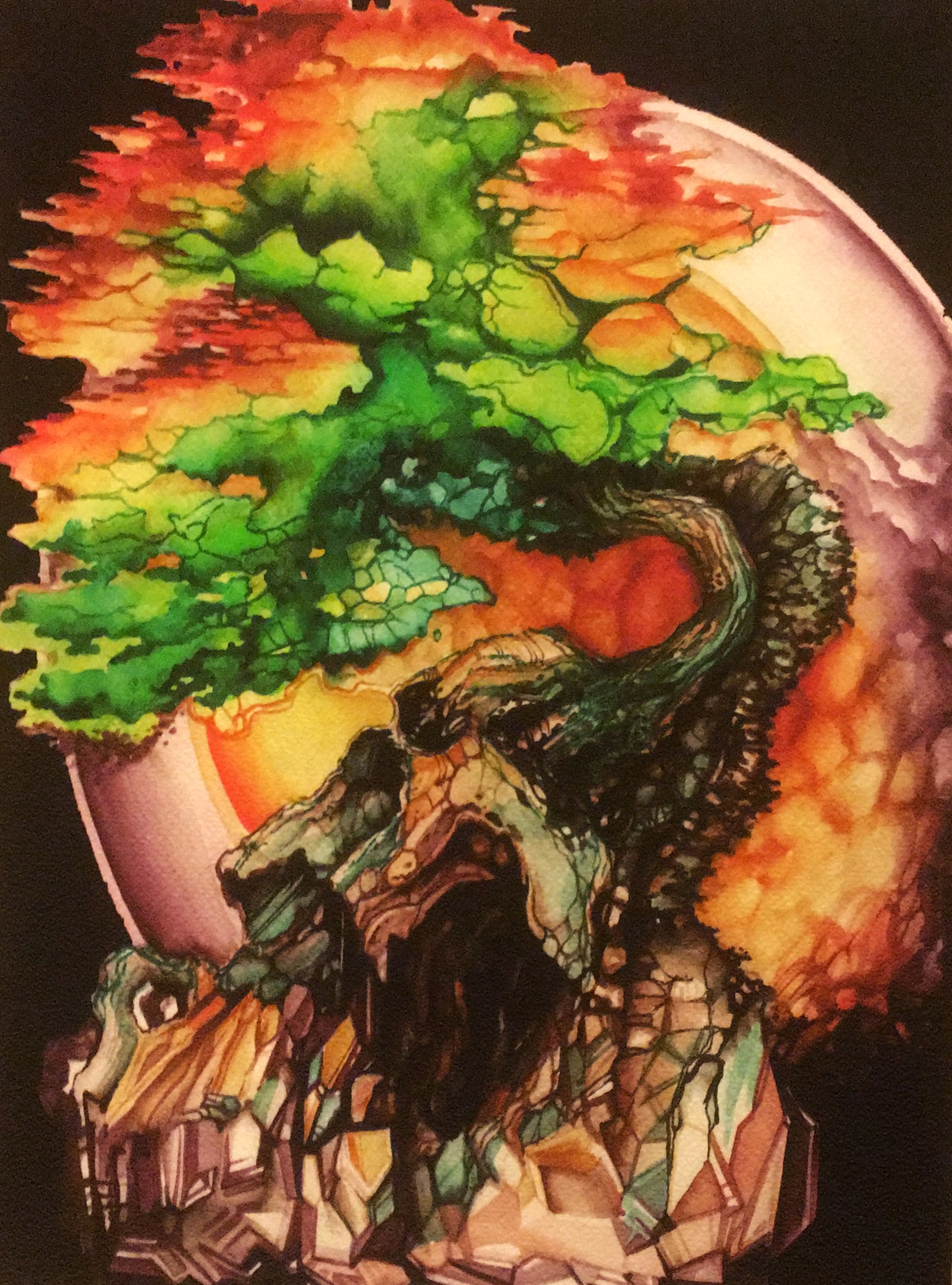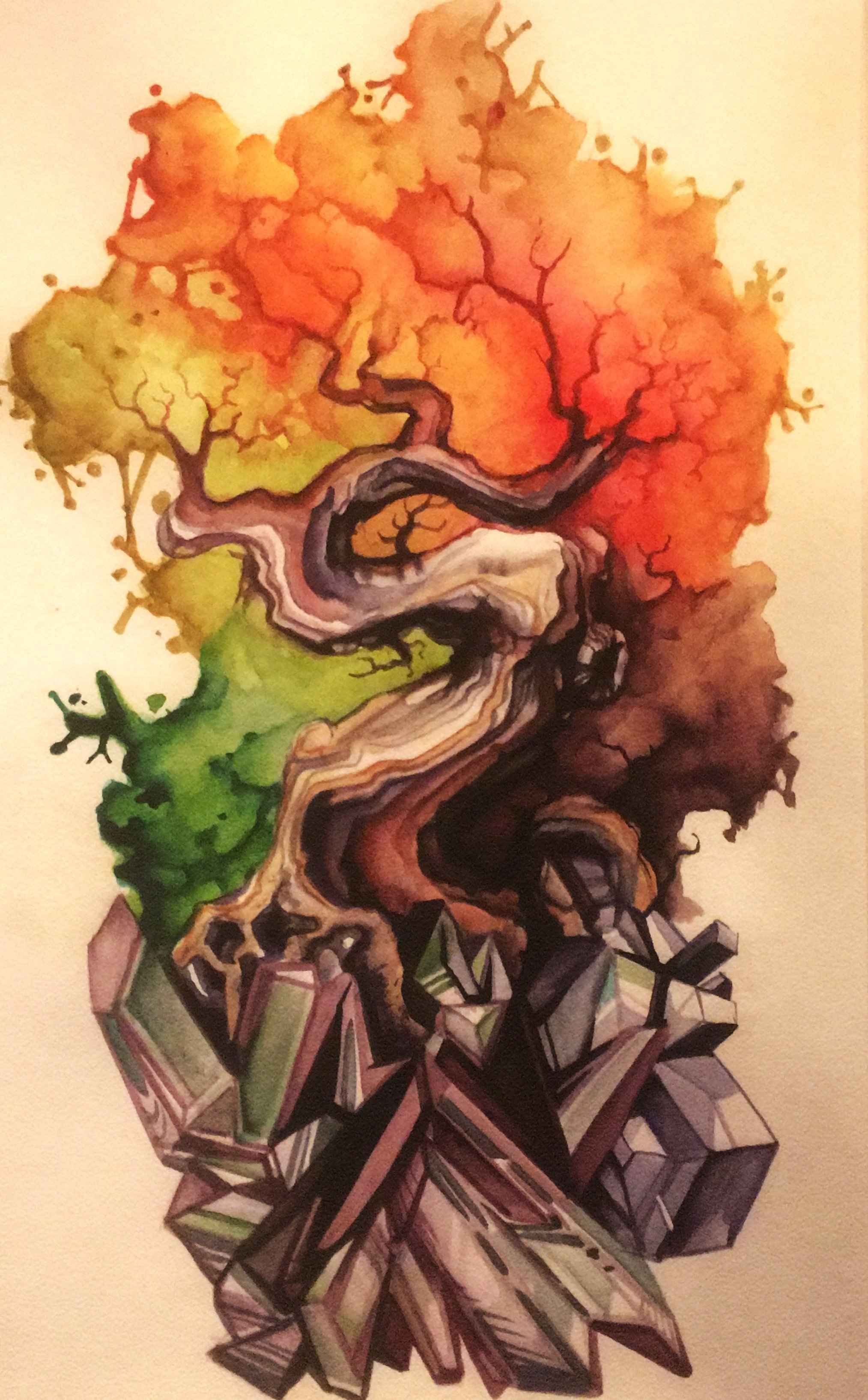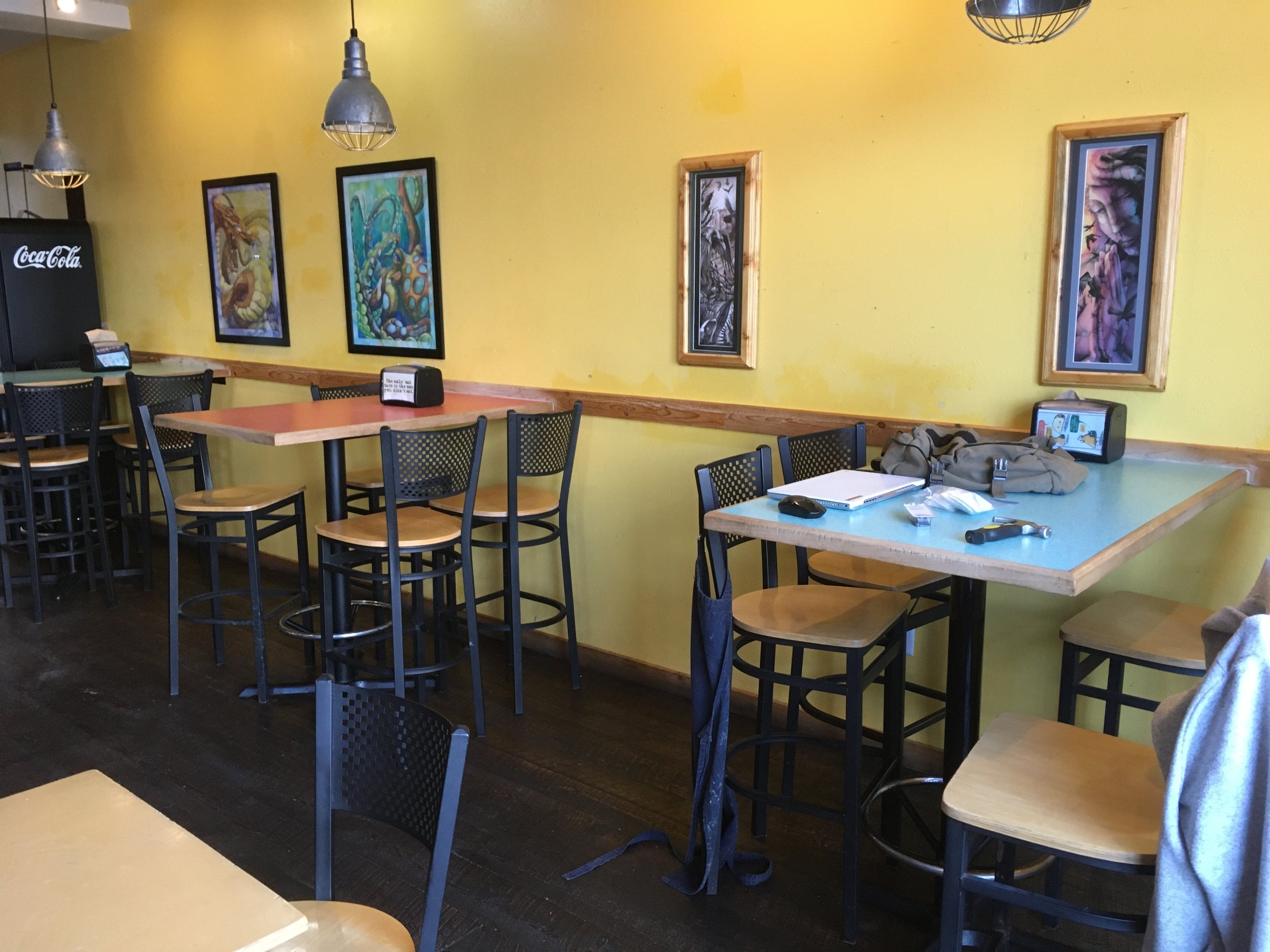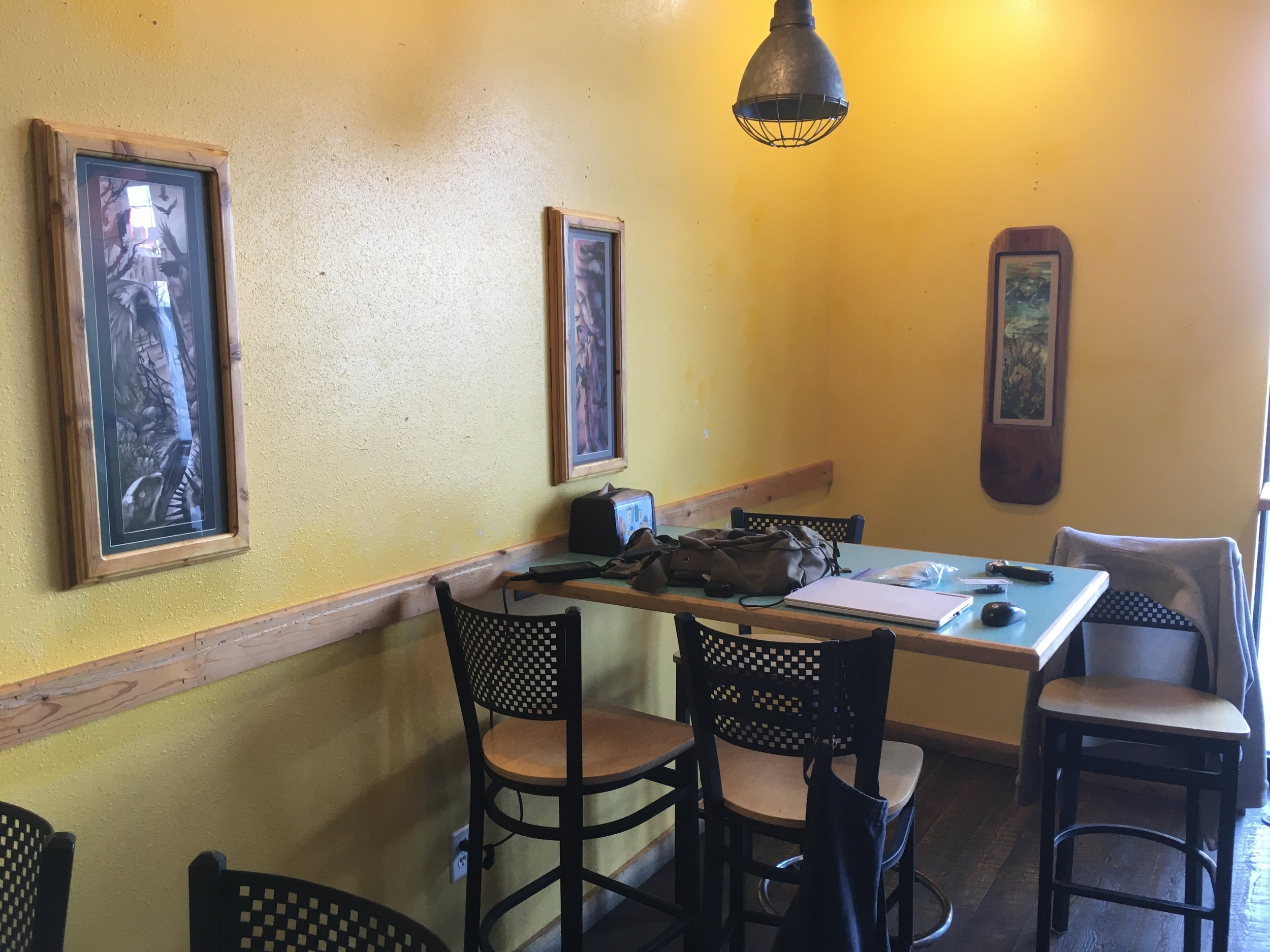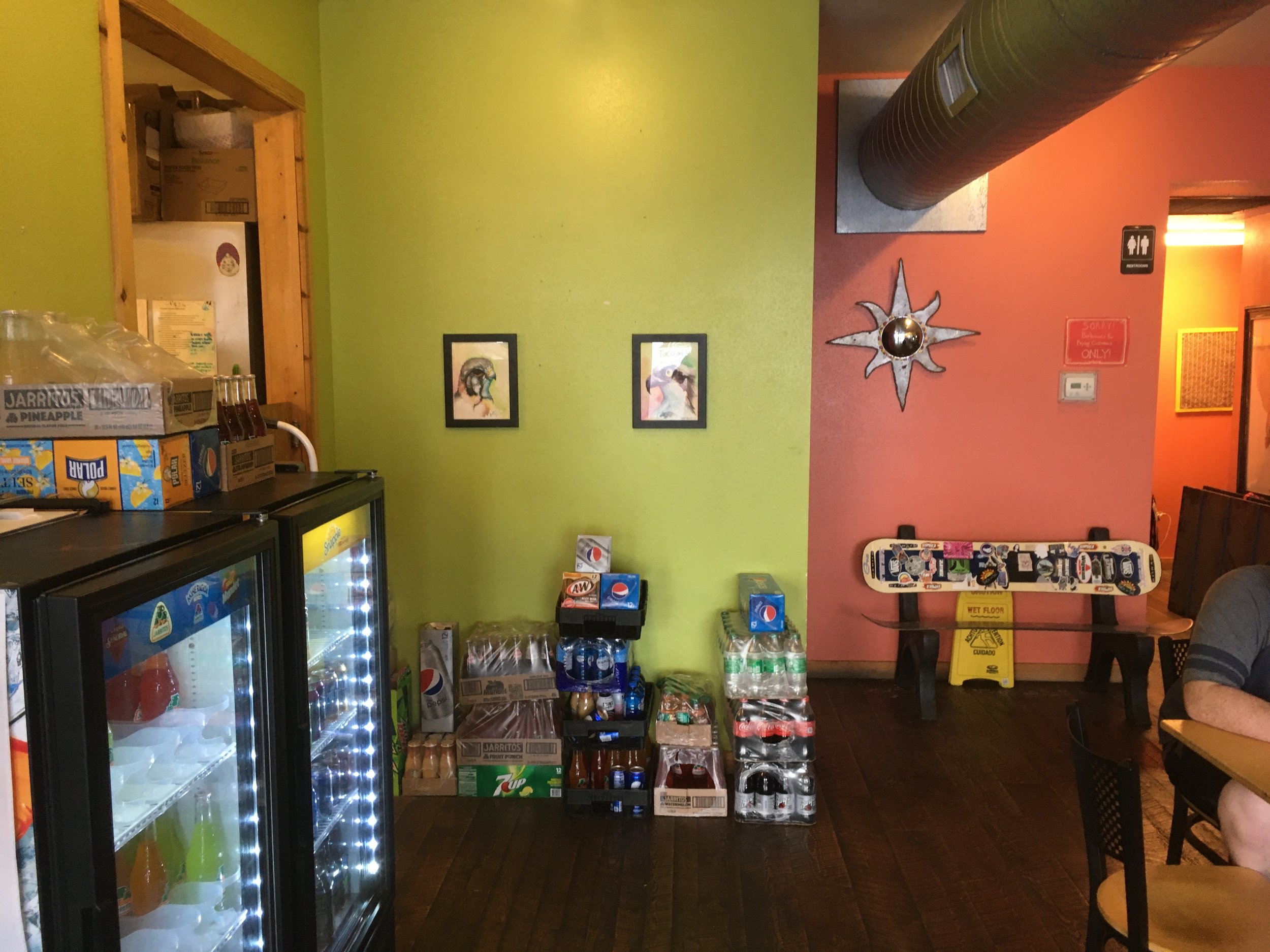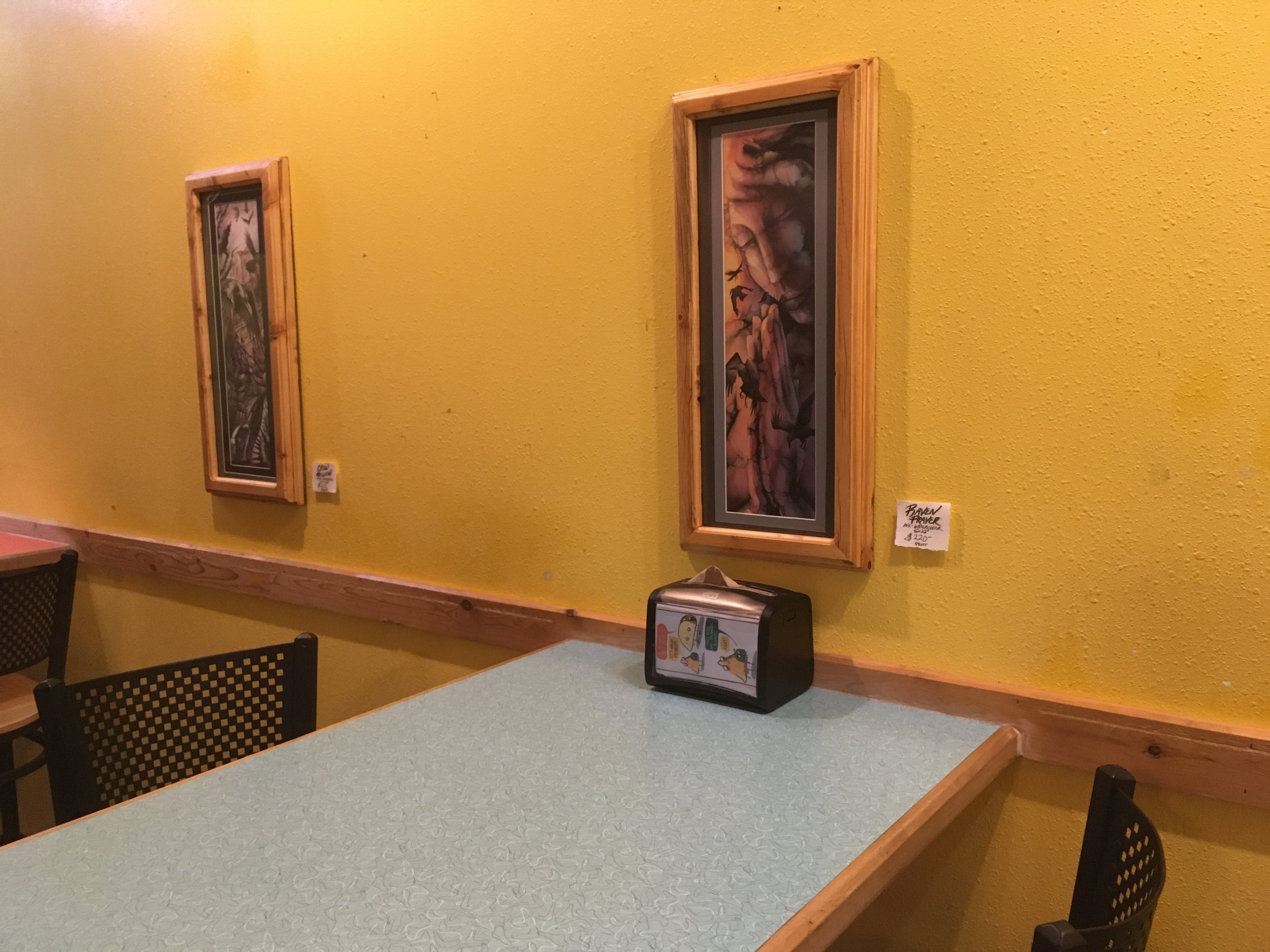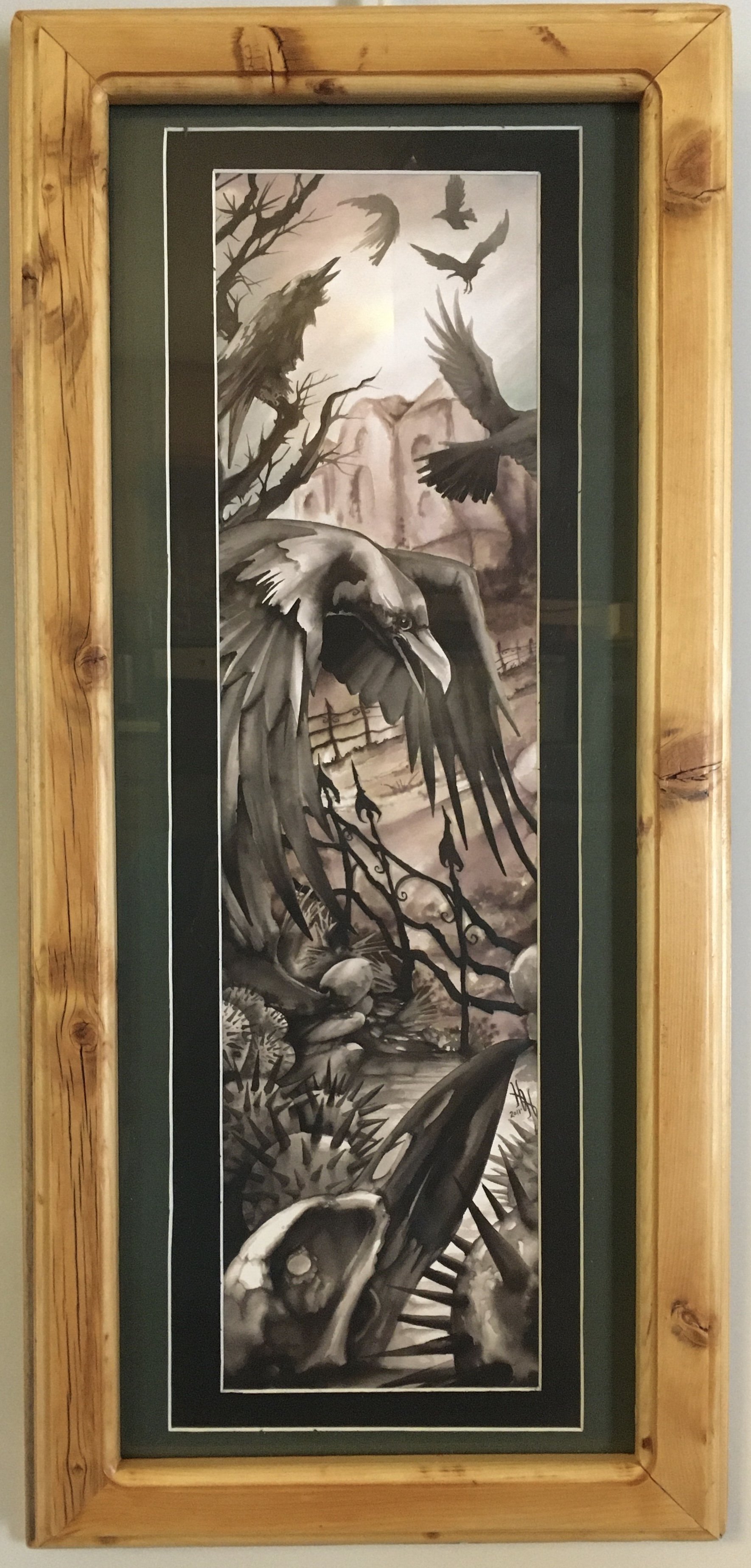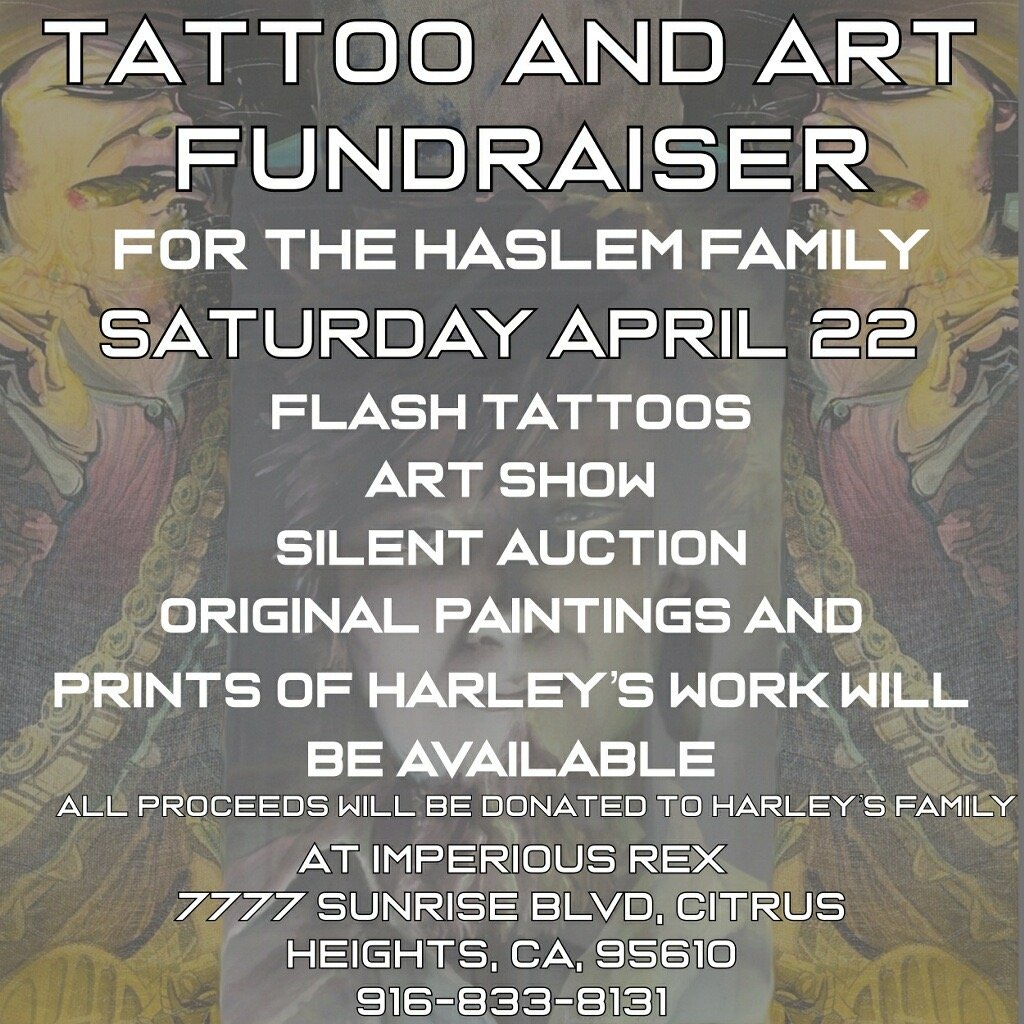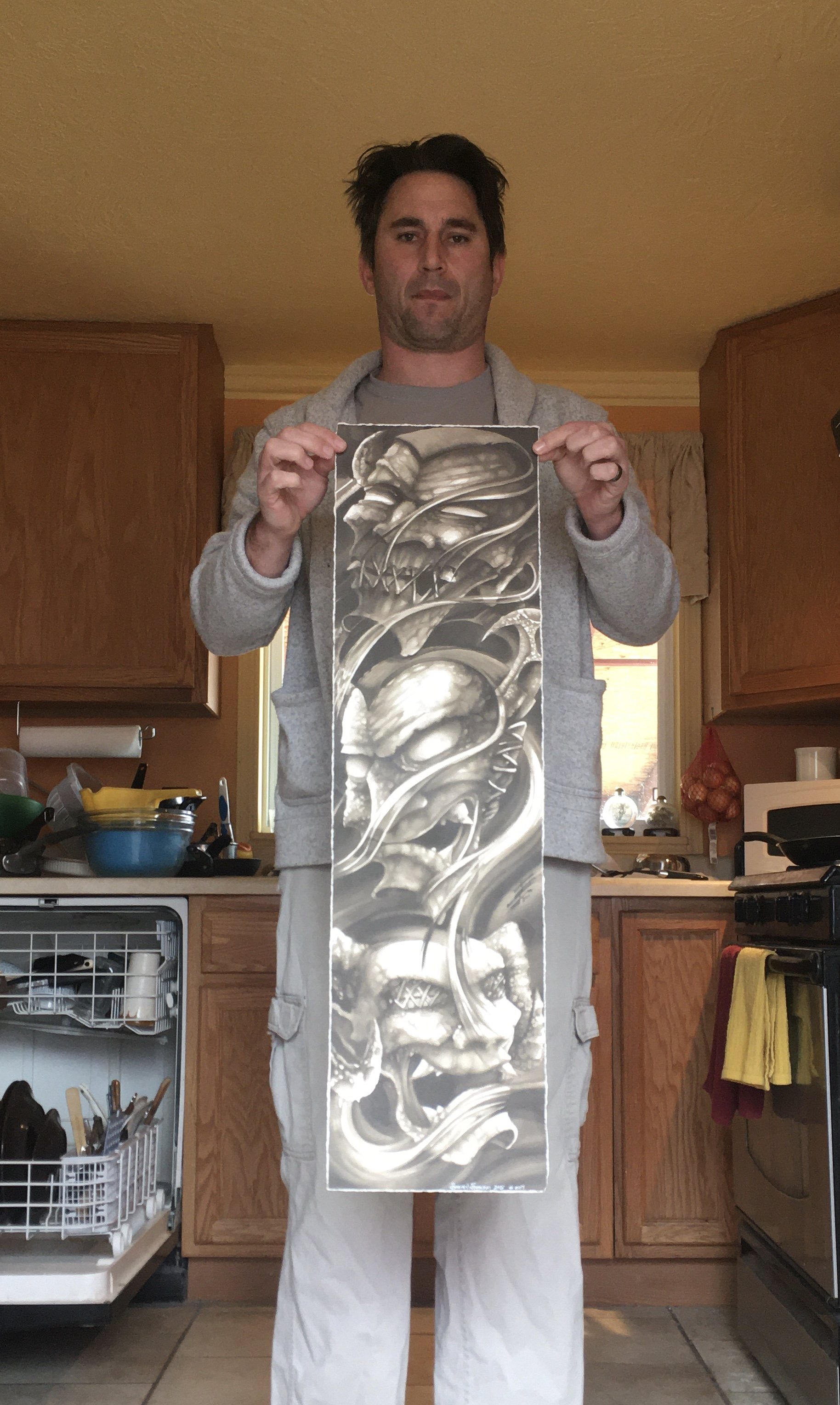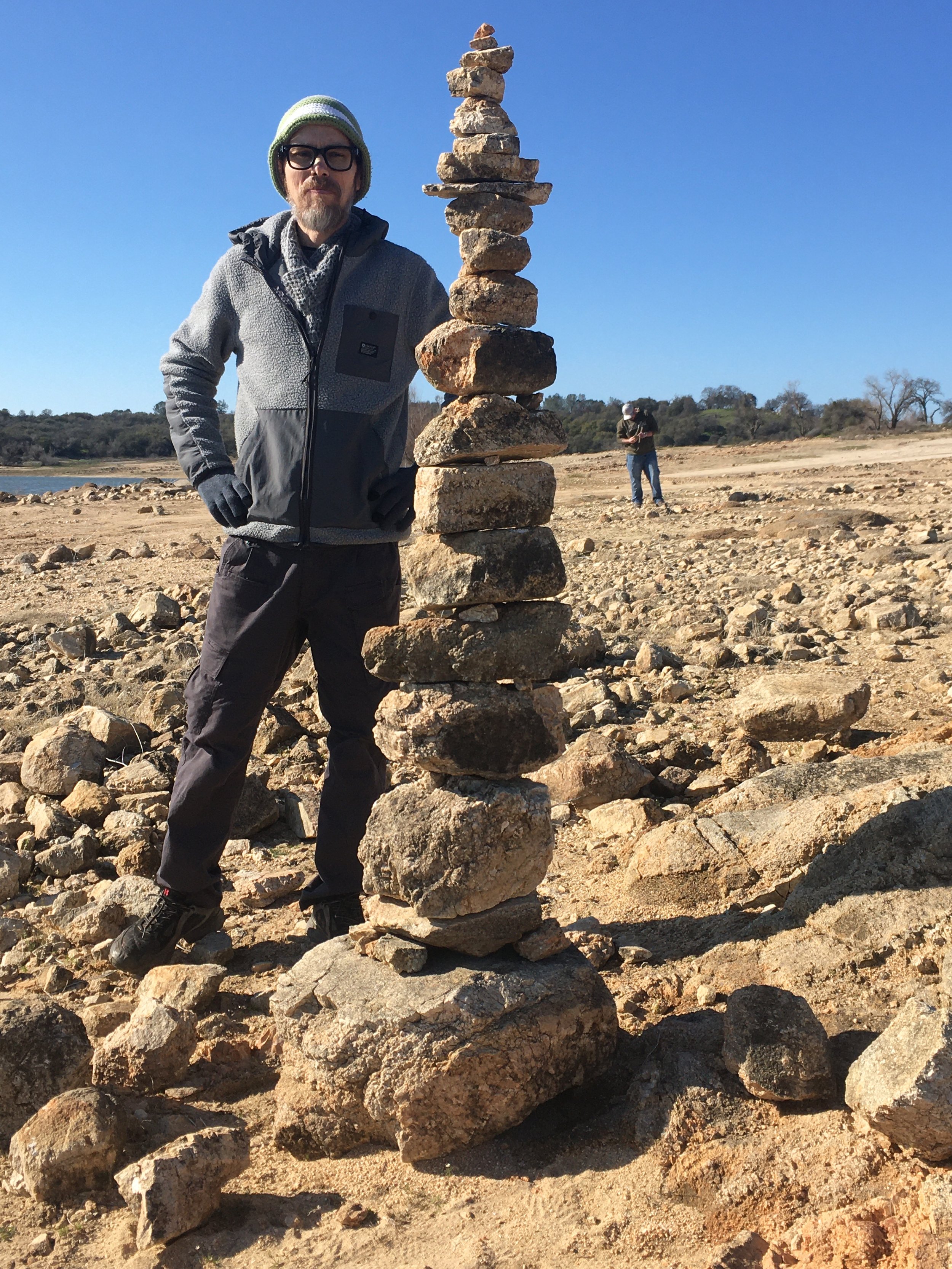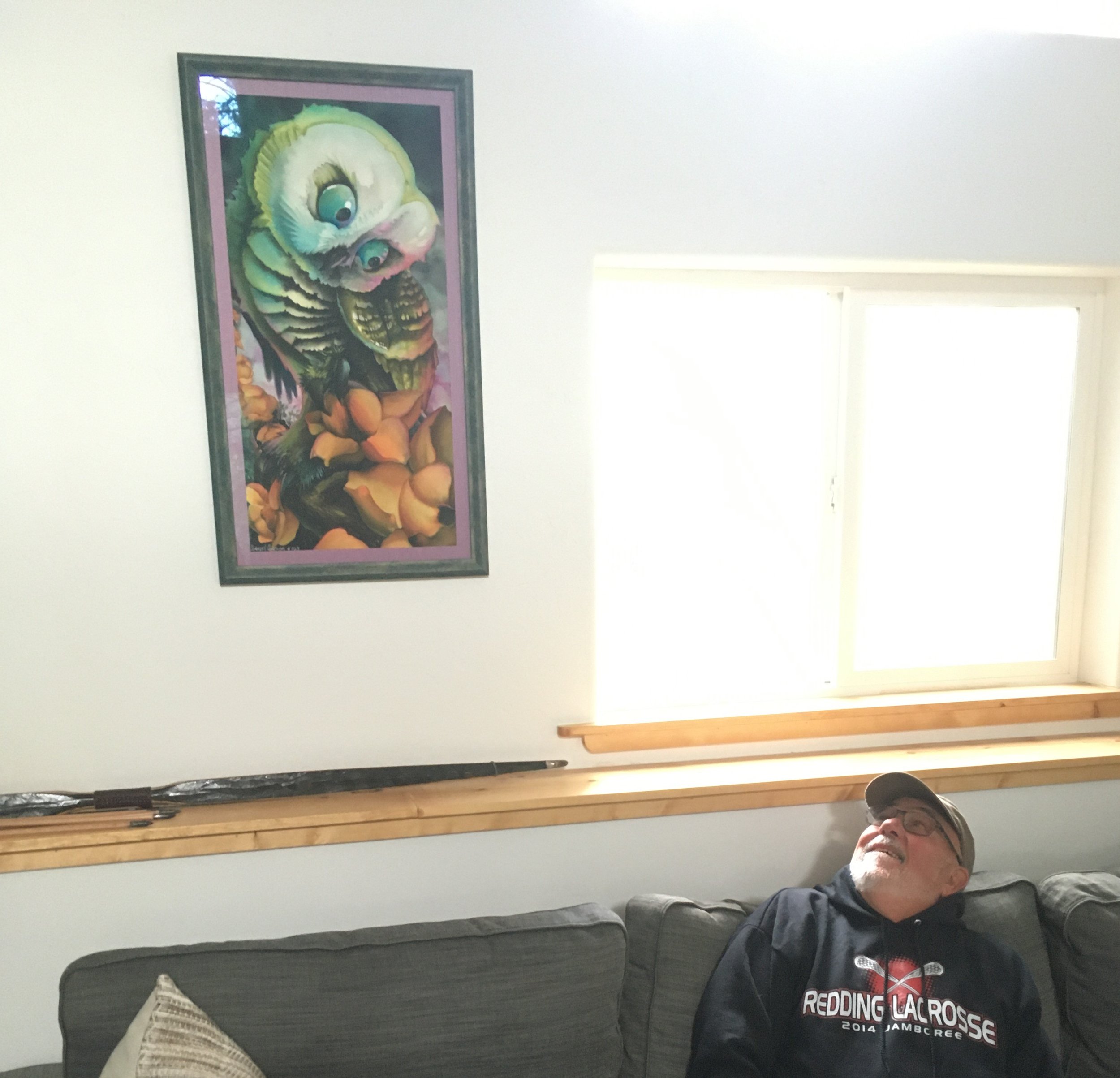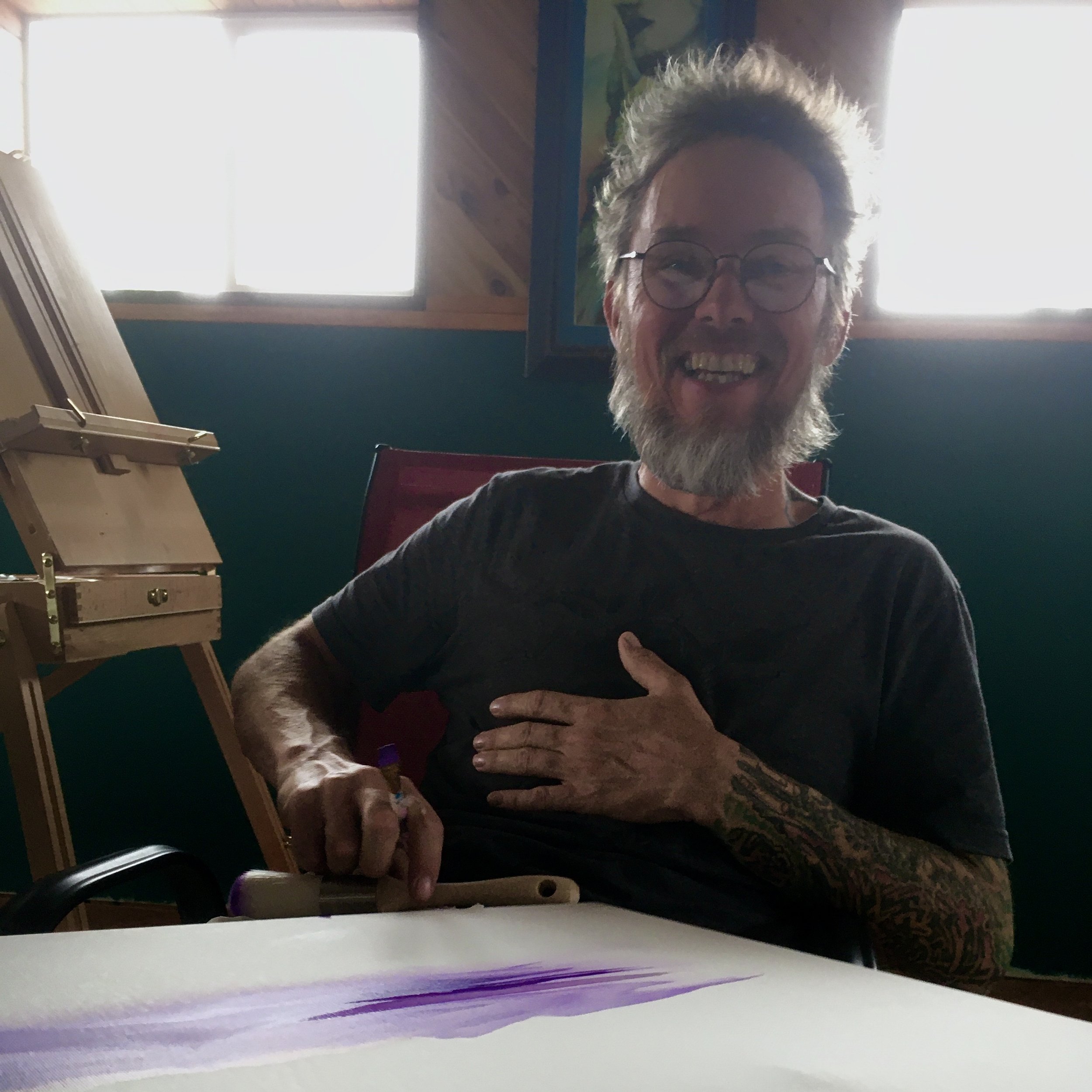Interview
Harley Haslem
Harley Haslem graduated in 1998 from the University of Montana with a Bachelor’s degree in art.
Harley tattooed an average of 700 people per year for over two decades. He has sculpted, created chainsaw carvings, and painted with ink and watercolors. In 2020, Harley was diagnosed with stage four esophageal cancer. He has undergone chemotherapy and radiation on his liver, brain, and esophagus. A tumor the size of a golf ball was removed from his brain in 2021.
Recently, Harley went into hospice. However, he has outlived the doctor’s expectations. He continues to paint watercolors. His most recent exploration, water based oils on black canvas is resulting in otherworldly landscapes.
This interview was conducted with the help of Harley’s brother, Keern Haslem, at the Harleys’ home during a long visit from many members of Harley’s family. He was put on hospice on February 26th and given two weeks to live. As of 13th March, Harley considered himself to be living ‘bonus days’.
Harley lives in California with his wife and two daughters.


What is your background and how did you start your journey in the art world?
“My art background starts from before I could speak. As far as I know, I’ve been doing art forever, and was formally trained at the University of Montana. I create watercolor paintings, and I’ve recently added oil painting to my repertoire. But the biggest chapter in my art journey is tattooing, which I’ve been doing for the last 25 years. I don’t recognize all my former clients, but I recognize the tattoos, and sometimes even remember the stories behind them. Call it the natural result of staring at each one for hours on end.
My art is peaceful, pleasant, happy, content. Without it, I’d feel ready to burst; stuffed full of something that I wouldn’t know how to get out. I would have to find some other outlet for creativity. Without art I’m certain I would just explode.”
What does your work aim to say? Does it comment on any current social or political issues?
“My work doesn’t really have a political or social agenda. I just like sharing beautiful pictures in my paintings. With tattooing, it’s incredible to think of the impact I’ve had on people’s lives. Every tattoo has a story. The most amazing thing is to create a portrait of a loved one for a client. Sometimes they cry or give you a hug when they see the finished piece. It feels good to make them feel so happy.”
Do you plan your work in advance, or is it improvisation?
“Sometimes I plan my work for up to a week or two, and sometimes it just takes ten minutes before I start. Once I get the idea down, it’s all improvisation from there. I try to build the story out of the idea using the language that I know.
With tattooing, you’re working directly on the person, with the person. It’s like you’re sitting there asking the canvas, ‘So what would you want on you?’ Then you go through this back and forth to come up with an idea, and then you have to come up with a design for them to give the go-ahead.”
Are there any art world trends are you following?
“Not at the moment. There are some artists whose work I like, but I don’t follow trends because I don’t want to be dragged in a certain direction. I’d rather just do my own thing.”
“Nature belongs everywhere in society. People should have access to nature and its beauty at every turn. It’s so calming and soothing to the mind.
If you could turn the corner and instead of seeing words and ads, you saw pictures of succulents, cacti, trees and sunsets, everybody would be happier.
I try to imbue my artworks with that same spirit. I want my work to beautify people’s worlds.”
What process, materials and techniques do you use to create your artwork?
“I use watercolor and ink on paper. The watercolor techniques I use are mostly washes, wet on wet, dry on wet, and wet on dry. To start, I think about the idea, sketch it out, and then paint it. A lot of times my sketches are very simple — just getting out the basic layout and overall design, figuring out how all the energy flows. Working from there, I start building up the detail. I have started doing oil painting using the wet on wet technique, which I learned watching Bob Ross, which I like on a black canvas. I’ve been doing a lot more cosmic-inspired work, like surreal snowy landscapes. Golds and purples are the focus of my palette right now, with a little bit of teals.
Some of my watercolors are a unique shape, very vertical. I started doing the tall skinny verticals solely for printing on skateboards, because skateboards are 8 x 32 inches. Then I found that they’re easy to frame, so I stuck with them. People love the vertical shape. It’s unique and fits nicely behind doors and walkways, or next to the cabinetry. There’s always a spot in the house for a tall vertical piece where nothing else would really look good.
Perspective plays a huge role in the way I set up these verticals. The worm’s eye and bird’s eye are really fun with a piece like this. If I sit at the base and draw it, I’ve basically given myself a worm’s eye view. And to draw a worm’s eye view painting from a worm’s eye view of the canvas distorts the perspective even more. Like in ‘Hush’, which you can see below, where she’s got her finger up to her mouth. That was a lot of fun. I really pushed the boundaries perspective wise on that one.”
What does your art mean to you?
“My art means everything to me. It’s a friend that I can always visit. I can sit down and hang out with art. I can draw and visit different worlds. I can create characters, subjects, and places. My art is a way to share my thoughts and creative ideas with people in a beautiful way.
With tattooing, you’re sitting with the person for anywhere from two to twenty hours or more, talking, sharing stories, getting to know each other. So, each person I’ve tattooed is a friend of sorts, or at least a really well-known acquaintance.
Doing paintings and printmaking I reach a larger number of people per piece, which is very satisfying. Whereas with tattooing everything is one shot — one payment, and potentially one person only ever seeing your art. They’re both fulfilling but in different ways.”
What’s your favourite artwork and why?
“That’s a tough one because I work in different mediums. As far as oil paintings go, I would say this night scene with a waterfall in the background. All white trees, snowy night scene, and then there’s a park bench looking out over the pond where the waterfalls are coming in. That always makes me feel peaceful. And then as far as watercolors are concerned, I’ve got this steam-powered raven skeleton I did that I thought was fun. It really pushed me into a different way of thinking.
For a long time I started doing watercolor style tattoos; coloring outside the lines instead of just filling them in. I did a ghost rider with the flames, and the way the flames came out looked super splashy. That was the first time I ever really felt like that was a watercolor tattoo and it really changed the way I looked at tattooing. All my favorite ones are pivotal — they changed the way I really looked at what I wanted to do with that medium.
My Mom has two watercolor paintings I did when about seven years old. One of them was a cherry blossom branch with flowering buds on it. I was good at getting the right depth and dimensions, even at that age.”
Have you had any noteworthy exhibitions you'd like to share?
“I’ve never entered a juried exhibition for prize money or anything like that, but I’ve been in quite a few local exhibitions. I’ve also had a number of art shows at the tattoo shop. I started those with my friend because we just wanted to have a place to hang our work. We held the shows every two to three months for two or three years and always had a good turnout. As long as you have somewhere to show your work, you’ll always paint.
I had a piece at auction at the Paris Gibson Square Museum of Art, the wood rose owl which you can see below. She’s beautiful with the little Hawaiian baby wood roses. The actual owl is about 2 inches tall, but in my work she’s about two feet tall by eighteen inches wide, and she’s staring down at you. If it’s hanging on the wall and you look up at it, she’ll be staring down at you judgmentally. It’s kind of funny for such a small owl. That plays into the worm’s eye perspective, and the piece gives you a slight vertigo feeling.”
Website: www.harleyhaslemarts.com, www.liquidteeshirts.com, store.harleyhaslemarts.com
Instagram: @artbyamyk21


